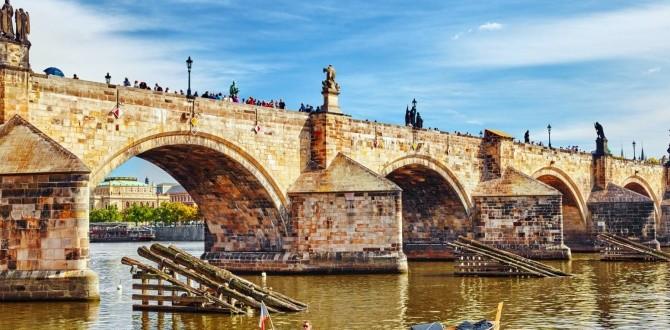Bhutan sunrise & sunset photo spots: Essential Guide
Bhutan sunrise and sunset photo spots offer magical light for stunning pictures. Discover the most breathtaking locations and tips to capture unforgettable moments in the Land of the Thunder Dragon. This guide makes finding and photographing these golden hours easy for any traveler.
The Kingdom of Bhutan, often called the “Last Shangri-La,” is a land of profound beauty and spiritual significance. Capturing its essence through photography is a dream for many, and the magical light of sunrise and sunset is when the landscapes truly come alive. However, finding the perfect vantage point, especially for beginners, can feel a bit daunting. Don’t worry! This guide is designed to make your journey to capture Bhutan’s dawn and dusk light simple and rewarding. We’ll walk you through the best spots and practical tips so you can return home with truly iconic images.
Why Bhutan at Sunrise and Sunset?
Bhutan’s natural beauty is amplified during the golden hours of sunrise and sunset. The towering Himalayas, ancient dzongs (fortresses), and prayer flags fluttering in the breeze are bathed in soft, warm light, creating a truly ethereal atmosphere.
Soft, Beautiful Light: Unlike the harsh midday sun, morning and evening light is gentle, creating long shadows and rich, warm tones that make any scene look magical.
Spiritual Ambiance: Many of Bhutan’s most sacred sites are illuminated by this soft light, adding an extra layer of serenity and solemnity to your photographs.
Dramatic Landscapes: The mountains of Bhutan, often shrouded in mist, reveal their majestic forms in the gentle morning and evening glow.
Top Bhutan Sunrise & Sunset Photo Spots
Bhutan offers a treasure trove of locations perfect for capturing the sun’s magical descent or ascent. Here are some of the most recommended spots, suitable for photographers of all levels.
1. Tiger’s Nest Monastery (Paro Taktsang)
There’s no place more iconic in Bhutan than the Tiger’s Nest Monastery, clinging precariously to a cliffside. While visiting later in the day is common, experiencing sunrise or sunset here is truly special, though it requires careful planning.
Sunrise: For the ultimate shot, waking up early to hike to the monastery for sunrise is unparalleled. The first rays of sun illuminating the monastery with the mist rolling in the valley below is a photographer’s dream. Be prepared for a significant hike in the dark.
Sunset: While you might not be at the monastery for sunset itself due to visiting hours, the viewpoint on the hike back down offers stunning evening light painting the surrounding mountains and the monastery in warm hues. This is often more accessible for photographers who want the experience without the pre-dawn hike.
Getting there: The hike to Tiger’s Nest is about 2-3 hours one way. You’ll need a Bhutanese guide to accompany you. For sunrise, special permits and arrangements need to be made well in advance, as this is not a standard tourist activity.
2. Dochula Pass
Dochula Pass is a must-visit, especially for sunset, and offers a stunning panorama. Located at 3,100 meters (10,171 ft), it boasts 108 chortens (stupas) and on a clear day, unobstructed views of the eastern Himalayas.
Sunset Views: As the sun begins to set, the chortens are beautifully silhouetted against the vibrant sky. The light catches the snow-capped peaks in the distance, creating a breathtaking scene.
Sunrise Potential: While less common, sunrise here can also be spectacular, with the first light hitting the peaks and the chortens emerging from the pre-dawn gloom.
Getting there: Dochula Pass is about a 30-minute drive from Thimphu, making it an easily accessible spot. Tour operators often include it in their itinerary.
3. Punakha Valley
The valley of Punakha, with its lower altitude and lush scenery, offers a different kind of magic at sunrise and sunset. The Punakha Dzong, situated at the confluence of two rivers, is particularly stunning.
Punakha Dzong at Sunset: The Dzong, with its intricate architecture and whitewashed walls, glows under the warm sunset light. Photographing it from across the river can yield incredible reflections and a sense of grandeur.
Sunrise over the Valley: Waking up early to catch the sunrise over the terraced fields and the snaking rivers can be very serene. The mist often present in the valley in the morning adds a mystical quality.
Getting there: Punakha is accessible via Dochula Pass from Thimphu. You’ll want to stay in the Punakha region to experience the best of its sunrise and sunset.
4. Bumthang Valley
Known as the spiritual heartland of Bhutan, Bumthang offers rolling hills, ancient temples, and a tranquil environment that’s perfect for capturing the soft light of dawn and dusk.
Jakar Dzong: The “Castle of the White Bird” overlooking Jakar town is a fantastic sunset spot. The warm light bathes the dzong and the surrounding valley.
Ancient Temples: Bumthang is dotted with numerous ancient temples like Kurjey Lhakhang and Jambay Lhakhang. Photographing these sacred sites as the sun rises or sets lends them a palpable sense of peace.
Getting there: Bumthang is in central Bhutan and usually requires a domestic flight from Paro or a long drive. It’s a region best explored for a few days to truly soak in its atmosphere.
5. Phobjikha Valley (Gangtey)
This beautiful U-shaped glacial valley is famous for being the winter home of the endangered Black-Necked Cranes. The wide-open landscape provides stunning vistas for sunrise and sunset.
Golden Hour Landscapes: The rolling hills and wide expanse of the valley are illuminated by soft, golden light at sunrise and sunset, creating a picturesque scene.
Crane Spotting at Dawn: If visiting during crane season (late October to mid-February), catching the cranes taking flight or settling in the early morning or late evening light is a truly special photographic opportunity.
Getting there: Phobjikha is a beautiful drive from central Bhutan, often combined with a Bumthang itinerary or as a separate destination from Gangtey.
6. Haa Valley
Less visited than Paro or Thimphu, the Haa Valley offers a more remote and pristine experience, with dramatic mountain backdrops perfect for sunset.
Mountain Vistas: The valley is surrounded by imposing mountains that catch the last rays of the sun beautifully. The sense of isolation adds to the photographic appeal.
Sunset over Lhakhang Karpo/Nagpo: The White Temple and Black Temple are central to Haa’s identity. Photographing them in the evening light can be very evocative.
Getting there: Haa Valley is typically accessed via a scenic drive from Paro, over the Chelela Pass.
Essential Photography Tips for Bhutan Sunrise & Sunset
Capturing the best light requires a little preparation. Here are some beginner-friendly tips to help you get those postcard-perfect shots.
1. Gear Up: What to Pack
You don’t need an arsenal of professional gear. Simple tools can make a big difference.
Camera: A DSLR, mirrorless camera, or even a good smartphone camera will work.
Lenses:
Wide-angle lens: Great for landscapes and capturing expansive views.
Telephoto lens (optional): Useful for isolating details or compressing the landscape when shooting distant mountains.
Tripod: Essential for low-light conditions. It allows you to use slower shutter speeds without getting blurry photos. Look for a sturdy, lightweight tripod.
Extra Batteries & Memory Cards: Cold weather and long shooting days can drain batteries quickly. Always have spares.
Remote Shutter Release (Optional): Helps avoid camera shake when pressing the shutter button, especially useful with a tripod.
Headlamp or Flashlight: Crucial for navigating hikes in the dark to reach sunrise spots or walking back after sunset.
Cleaning Kit: To keep your lens free of dust and smudges.
2. Planning Your Shots
Timing and location are key.
Scout Locations: If possible, visit potential spots during the day to identify the best angles and compositions.
Check the Weather: Bhutan’s weather can be unpredictable. A slightly cloudy sky can add drama, but heavy clouds might obscure the sun. Use weather apps to get an idea.
Arrive Early: For sunrise, aim to be at your chosen spot at least 30-45 minutes before the official sunrise time. For sunset, be there an hour before. This gives you time to set up and capture the changing light.
Know the Sunrise/Sunset Times: Use a reliable app or website (like timeanddate.com) to find the exact times for your dates and locations.
3. Camera Settings for Golden Hour
Don’t be afraid to experiment, but here are some starting points.
Shooting Mode:
Aperture Priority (Av/A): Allows you to control depth of field (how much is in focus). A smaller aperture (higher f-number, e.g., f/8-f/16) keeps more of the scene sharp, ideal for landscapes.
Manual Mode (M): Gives you complete control over aperture, shutter speed, and ISO. This is best once you’re comfortable.
ISO: Keep ISO as low as possible (e.g., 100-400) to minimize noise and achieve cleaner images, especially in good light. You might need to increase it in very low light if you can’t use a tripod.
Shutter Speed: This will vary greatly. With a tripod, you can use slower speeds (e.g., 1/30s, 1s, or even longer) to capture light trails or smooth water.
White Balance: Auto white balance can sometimes struggle with the warm tones of sunrise/sunset. Try setting it to “Daylight” or “Cloudy” for warmer results, or experiment with custom white balance. Shooting in RAW format allows you to adjust white balance later in editing.
Focus: Autofocus can sometimes struggle in low light. If using a tripod, you can focus manually or use the camera’s focus assist features.
4. Composition Techniques
Make your photos stand out.
Rule of Thirds: Imagine dividing your frame into nine equal sections with two horizontal and two vertical lines. Place key elements along these lines or at their intersections.
Leading Lines: Use natural lines like paths, rivers, or fences to draw the viewer’s eye into the image.
Silhouettes vs. Details: Decide if you want to expose for the highlights (sky) to create silhouettes of foreground objects, or expose for the foreground to retain detail.
Framing: Use natural elements like archways or trees to frame your subject.
Include a Human Element: A small figure can add scale and a sense of narrative to your landscape, especially in places like Tiger’s Nest.
5. Safety and Etiquette
Respect for local culture and the environment is paramount.
Dress Modestly: Especially when photographing religious sites. Shoulders and knees should be covered.
Respect Monks and Religious Practices: Be quiet and discreet. Always ask permission before taking close-up photos of people. Photography is often restricted inside temples and monasteries. Check signage.
Stay on Trails: When hiking, especially in sensitive ecological areas.
No Flash Photography Indoors: This is often prohibited and can damage ancient artwork.
Be Mindful of Your Guide: Your guide is your connection to Bhutan. Communicate your photography interests, but also respect their guidance and knowledge of the area and local customs.
Bhutan Sunrise vs. Sunset: Choosing Your Moment
Both sunrise and sunset offer unique photographic opportunities in Bhutan. Understanding their differences can help you plan your most impactful shots.
| Feature | Sunrise | Sunset |
| :—————– | :——————————————— | :———————————————- |
| Light Quality | Cool, soft, gradually warming, mystical | Warm, golden, rich, fading |
| Atmosphere | Peaceful, quiet, serene, new beginnings | Vibrant, dramatic, reflective, end of the day |
| Visibility | Often clearer skies before clouds build up | Can be clearer, but also prone to dust/haze |
| Temperature | Cold, requiring warm clothing | Cooler, but generally milder than dawn |
| Crowds | Generally fewer people at popular spots | Can be more crowded at easily accessible spots |
| Activity | Quiet meditation, birds waking up, mist | Prayer flags fluttering, village activity |
| Challenges | Pre-dawn hike, very cold, low light requires tripod | Fading light, dynamic sky, potential over-saturation |
| Best For | Ethereal landscapes, mist-filled valleys, serene temples | Dramatic skies, glowing dzongs, silhouetted mountains |
Traveling Comfortably: Essential Considerations
When planning a trip to Bhutan, especially one focused on early mornings or late evenings for photography, comfort and preparedness are key. This is where thinking about practical travel essentials comes into play, ensuring your journey is as stress-free as possible.
For instance, long travel days or early starts can sometimes lead to unexpected needs. If you have health conditions or simply want to ensure maximum comfort during your travels, having discreet and reliable personal care items available can make a significant difference. Products like adult diapers or child diapers, especially those designed for extended wear, can provide peace of mind, whether you’re on an overnight bus, a long flight, or simply out for an entire day of sightseeing and photography without easy access to restrooms.
Discreet Protection: Many modern options are thin and absorbent, offering reliable protection without bulk. Brands often focus on odor control and skin-friendliness, crucial for long-term wear.
Comfort on the Go: Ensuring you have these essentials packed can reduce anxiety about access to facilities, allowing you to immerse yourself more fully in the experience of capturing Bhutan’s beauty. Sites like NorthShore_ offer a wide range of options for both adults and children, which can be helpful for research and planning.
Practical Luggage: When packing photography gear and personal comfort items, choosing the right luggage is essential. Look for backpacks with padded compartments for cameras and separate sections for clothing and personal items. This ensures your gear is protected and accessible.
By planning for both your photography needs and your personal comfort, you can ensure your Bhutanese adventure is both visually rewarding and deeply enjoyable.
Frequently Asked Questions
Q1: Do I need a guide to visit sunrise and sunset spots in Bhutan?
A1: Yes, you will need a licensed Bhutanese guide to accompany you for almost all tourist activities and to access most areas. For specific early morning or late evening photography at sensitive sites like Tiger’s Nest, special permits and arrangements through your tour operator and guide are required.
Q2: What’s the best time of year for sunrise and sunset photography in Bhutan?
A2: Spring (March-May) and Autumn (September-November) generally offer the clearest skies and most pleasant weather for photography. Autumn is particularly popular for its vibrant foliage and clear mountain views.
Q3: Is it safe to hike for sunrise at Tiger’s Nest?
A3: The hike is well-maintained but strenuous. Hiking before dawn requires a headlamp and caution. It’s done safely by many, but requires good physical condition and arrangements made with your guide and tour operator.
Q4: Can I fly my drone for aerial shots at sunrise/sunset?
A4: Drone usage in Bhutan is heavily restricted. You would need special permits, and it’s generally not allowed in national parks, near religious sites, or for general tourism. Always check current regulations with your tour operator.
Q5: What if the weather is bad? Can I still get good photos?
A5: Absolutely! Moody, misty, or dramatic cloudy skies can lead to incredibly atmospheric and unique photographs. Embrace the weather; it adds character to Bhutan’s landscapes.
Q6: Do I need to book sunrise/sunset shoots in advance?
A6: Yes, if you’re looking to access specific locations like Tiger’s Nest for sunrise, you absolutely must pre-arrange this. For most other public spots like Dochula Pass, it’s more about timing your visit with your guide.
Q7: What kind of traditional Bhutanese clothing can I photograph?
A7: Bhutanese traditional dress, the “gho” for men and “kira” for women, is worn daily. You’ll see people in these outfits at markets, temples, and festivals. Always ask permission before taking close-up photos of individuals.
Conclusion
Bhutan, with its serene landscapes and spiritual aura, is a dream destination for photographers, especially during the golden hours of sunrise and sunset. From the iconic Tiger’s Nest monastery bathed in dawn light to the panoramic vistas of Dochula Pass under a setting sun, the opportunities for capturing breathtaking imagery are abundant.
By preparing with the right gear, understanding your camera settings, and employing simple composition techniques, you can elevate your travel photography. Remember to embrace the challenging yet rewarding hikes, respect the local culture, and stay comfortable throughout your journey. The magic of Bhutan’s sunrises and sunsets is waiting to be discovered, and with this guide, you’re well on your way to capturing unforgettable memories. So pack your camera, set your alarm, and get ready to witness the Land of the Thunder Dragon in its most radiant light. Your camera, and your soul, will thank you.




